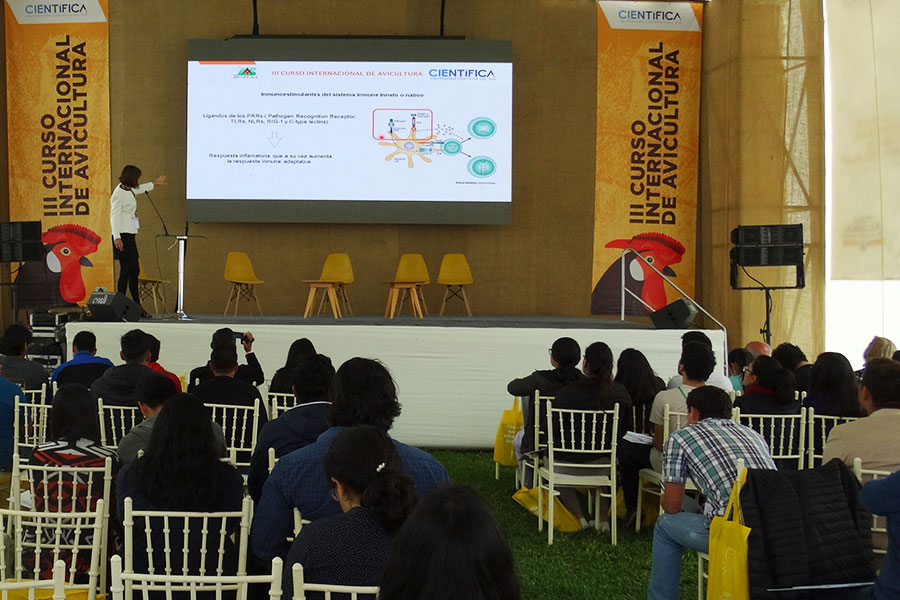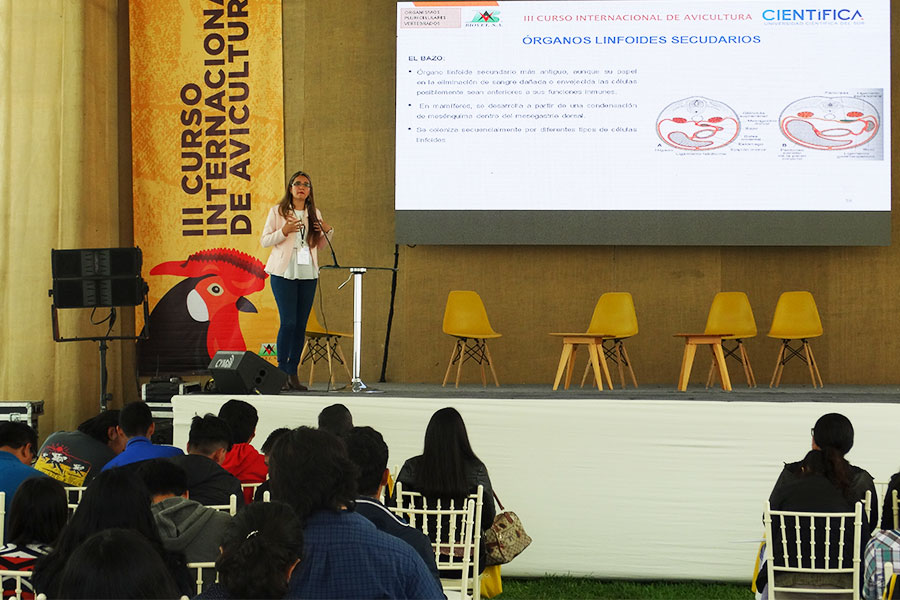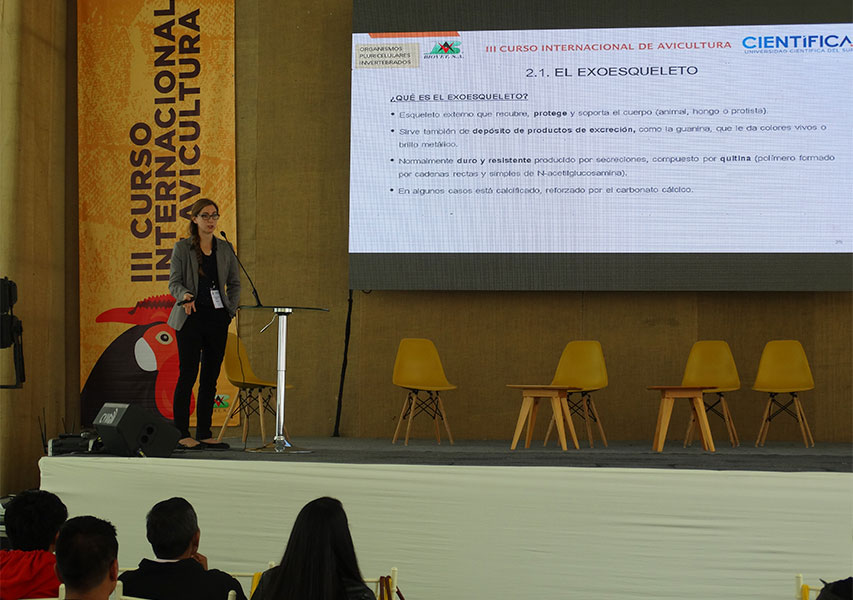The III International Poultry Course addresses avian immunology

The III International Poultry Course, held at the Scientific University of the South (Científica, Lima Peru) on October 20th and 21st addressed in its first two sessions aspects related to avian immunology: veterinary immunology, anatomophysiological factors in birds related to immunity and concepts of immunomodulators, pronutrients and vaccine plans.
Regarding the immune system of animals, Dr. David Díez (Biovet SA), explained in his presentation aspects related to the evolution of the immune systems from unicellular and multicellular invertebrate organisms, up to vertebrates and described the different types of antigen; types of vaccines; design, elaboration, distribution and application of vaccines and the main veterinary vaccines.
“The immune system is made up of physicochemical barriers, cellular responses (nonspecific and specific) and serological responses (nonspecific and specific). It is the most complex system of the animal organism, since, with each new group of animals, a new defense mechanism is accumulated as a complement to the previous mechanisms from protozoa to mammals”, said Dr. Díez.
Also, the veterinarian stressed that “there is a marked difference in the immune system of birds and mammals, although both come from a common ancestor (reptile)”. Therefore, knowledge of the phylogenetics of the immune system allows us to know the variability of the response and justifies the different specific developments of vaccines for fish, birds or mammals”, underlined Dr. Veterinarian of Biovet S.A.

On the other hand, Drs. Júlia Pié (Biovet S.A) and Connie Gallardo (Científica University) developed the “Anatomophysiological factors in birds related to immunity”. They began their dissertation studying the unicellular organisms and the multicellular invertebrates and vertebrates.
As they explained, “the simplest (unicellular) organisms already have very simple defense mechanisms against external aggressions (cell membrane, calcium deposits and melanin). These mechanisms are conserved in more complex organisms (pluricellular), which add other effectors of the defense system, which derive mostly from the mesoderm (embryonic layer). This occurs both in invertebrate and vertebrate organisms (with the exception of doploblastic invertebrate organisms, which do not present mesoderm in their embryonic development). Therefore, it is from the appearance of the mesoderm when the organisms increase the complexity of the immune system”.
Dr. Júlia Pié highlighted among the conclusions: “temperature has great importance in embryonic development (for example, in reptiles it interferes with the sexual differentiation of the embryo) and may have the same importance in the development of other organs and systems” and ended with the presentation of the hypothesis: “it is probable that temperature plays a vital role in the development of the embryo mesoderm and an impact on the appearance or not of the lymphatic chain, since in reptiles the optimum temperature incubation 28- 30 ᵒC, in birds, it is 37.5-38.06 ᵒC and in human embryos 37.5-37.8 ᵒC
Regarding the “Immunomodulation and new strategies for the development of veterinary vaccines”, Dr. Cristina Latasa (Recombina) analyzed: the historical perspective of vaccines; the immune mechanism of vaccination; classical or conventional vaccines: live attenuated and inactivated; autovaccines and adjuvants and immunomodulatory activity of pronutrients and vaccination programs in birds.
“Conventional live attenuated, inactivated and toxoid vaccines have been very successful in controlling and eradicating both human and animal diseases (smallpox, rabies, foot-and-mouth disease or CSF (Classical Swine Fever)). Also, there are still diseases for which there are no vaccines and several limitations of efficacy, safety, etc., so the development of new adjuvants and the administration of pronutrients with immunomodulatory capacity can contribute in a decisive way to the best effectiveness of the veterinary vaccines“, said Latasa.
Last but not least, in relation to vaccination programs in birds, the representative of Recombina pointed out that they are variable depending on several factors: the type of bird, the epidemiology of the region, the health situation, the prevalence of infections by pathogens that cause immunosuppression and the levels of maternal immunity. In her opinion, “the biotechnological advances will allow the development of new multivalent vaccines”. In this regard, she concluded: “We have validated two new vaccination systems based on the expression of heterologous antigens from the chromosome of an attenuated strain and in the engineering of natural plasmids.”

